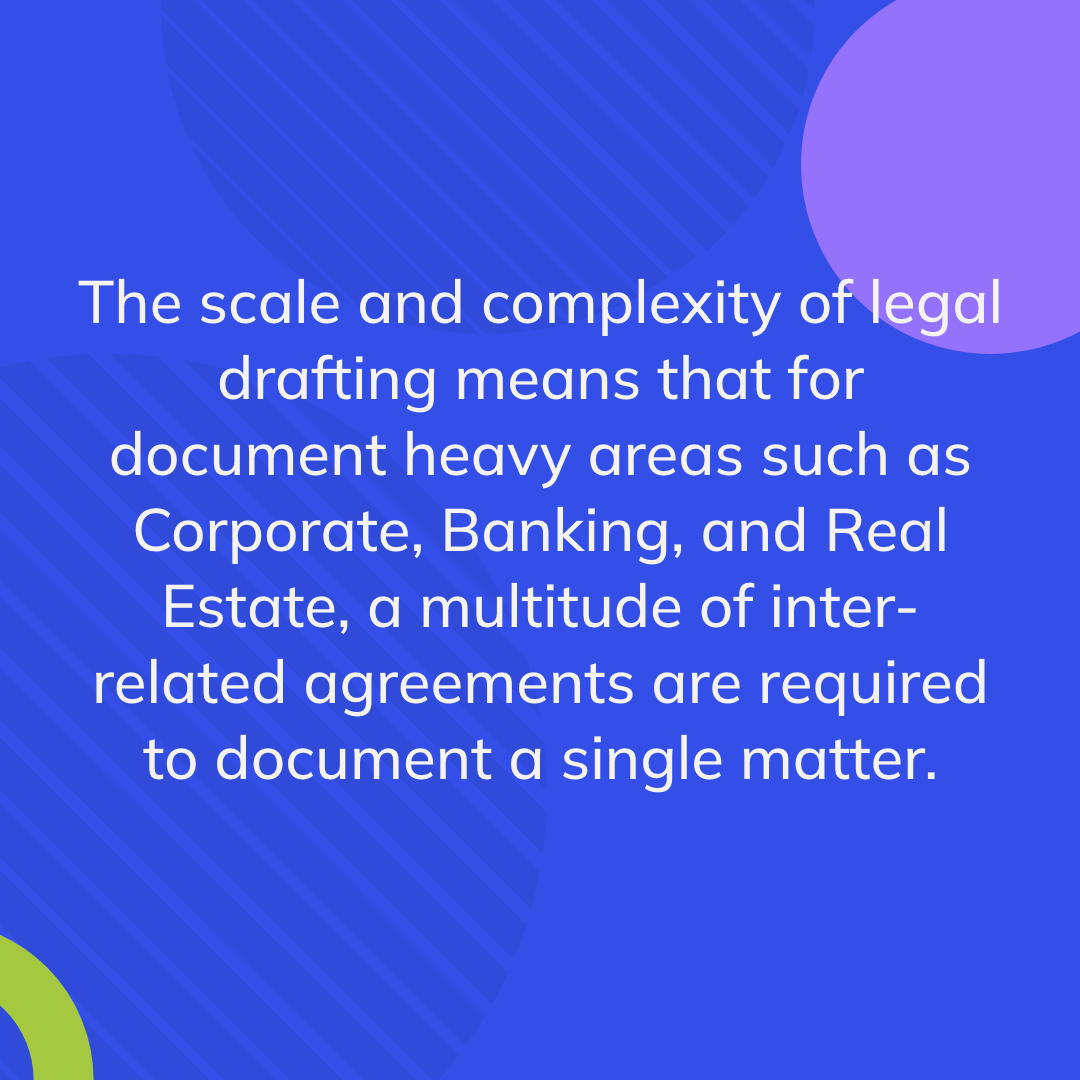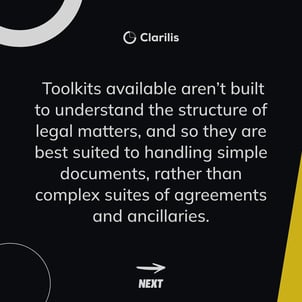In this post, we discuss what is holding back those productivity benefits and causing poor adoption, and why our intelligent drafting solution means the outlook for the future of automation is far brighter.
There’s been a shift in perspective on innovation in law firms
Poor adoption is often at the heart of the failure of traditional document automation projects. One reflex assumption is that it’s down to lawyers being too tech-wary to fully embrace digitally-enhanced working practices. But is it fair to blame the disappointing ROI of some platforms entirely on lawyers clinging on to traditional, manual ways? Not really. It’s certainly true that in the past lawyers have had a reputation for being technology laggards, but the legal industry today is a far more tech-friendly space:
- Law firms are taking a more proactive stance on innovation. Of the firms responding to HSBC’s 2022 ‘Law firm strategy and investment survey’, 70% said investing in systems that help with ‘doing legal work quicker or more efficiently’ is a priority. Which ties in well with another finding of that report, that 67% of firms saying the greatest potential for disruption at their firm are ‘peer firms with more tech-driven business models’.
-
Technology is now known to significantly improve law firm performance. For example, LawtechUK predicts increased use of digital technology by legal providers could lead to annual productivity gains worth £1.1 billion to £1.7 billion. Even the most stubborn traditionalists can’t ignore these numbers.
- Law firm leadership is more tech-savvy. Law firms are no longer exclusively led by lawyers who rose through the junior ranks thinking a dictaphone was technology’s answer to achieving peak productivity. With more digital-savvy voices in c-suites, there’s infinitely more pressure (rather than reluctance) to invest in innovation coming from the top of law firms.
So, why are traditional automation platforms not fit for purpose
If it’s not the tech-reluctance of lawyers preventing adoption of automation in law firms, then what is it? In short, document automation is often under-utilised in law firms because off-the-shelf toolkits struggle when it comes to automating complex documents to a level that provides a tangible benefit.
The scale and complexity of legal drafting mean that for document heavy areas such as Corporate, Banking, and Real Estate, a multitude of inter-related agreements are required to document a single matter. For example, an M&A transaction will not only require an SPA (which is complicated in itself) but also a whole host of ancillaries. Each of these agreements can be lengthy, and before a first draft can be handed to a client, a lawyer will need to make thousands of changes. With drafting being such a time-consuming manual task, the potential efficiency benefits of automating the process are significant.
The problem is automation on this scale and complexity is an unrealistic ambition for many off-the-shelf document automation toolkits. And when they fall short of expectations, this forces lawyers to step back in and manually draft what the technology misses. When this happens the ‘cost’ of using the platform (a.k.a. the hassle factor) can easily outweigh the benefits. Understandably, a busy legal professional may conclude there’s a better use for their limited time than learning how to grapple with technology that can’t complete the job.
But (as our clients will attest) this isn’t the complete picture when it comes to complex suites of documents, and your law firm doesn’t have to stand still when it comes to automated drafting.
Next – Along comes deep automation
You could automate a 300 page agreement using a standard automation toolkit in a day, but the automated elements would be so minor that it wouldn’t return any value - you’ll still need to spend hours manually drafting.
That’s the unresolved tension with standard document automation toolkits – the more you automate, the deeper you go, the more the logic complexity increases exponentially, as does the time it will take you to build it, let alone maintain it. There’s no shortcut to a deep automation. Plus all that time that you’ve taken to create the automation the lawyers are still manually drafting.
But unless you automate deeply you won’t get the return, lawyers won’t see the value, they won’t use it and it will wither and die. If you still need significant manual drafting post automation, then you can’t delegate that to a junior, it won’t reduce review time, and all the potential benefits regarding quality, consistency, and risk mitigation diminish every minute you are drafting manually.
Clarilis is different. The combination of our intelligent drafting platform, which was designed to handle complex suites of documents, and our lawyer-led, fully managed service, means our customers get the best of all worlds. Deep automations that provide transformational value, but with rapid time to go-live so you can benefit from that value quicker.
A very different automation outcome for law firms
With Clarilis intelligent drafting, law firms are now in an era of document automation where the technology is available to transform practices and drive tangible benefits. As a result, rather than low adoption and disappointing ROI, Clarilis clients are able to produce first drafts of complex banking agreements in under two hours, an SPA with all ancillaries in under two hours, and lease suites in minutes. In addition, drafting can be more freely delegated to junior lawyers as ‘drafting on rails’ mitigates many of the risks inherent in manual drafting. This leads to a whole host of other benefits, from better job satisfaction, increased lawyer capacity to deliver added value, to an uplift in margins and a better competitive position.
We would love to say this will give you a competitive advantage over your peer firms, but with over half of the UK Top 60 firms already using Clarilis, most of whom have already invested in automation toolkits, it’s more a case of keeping up. When it comes to document automation, good enough just isn’t good enough any more.
Find out how to move from Now to Next!



-1.png)